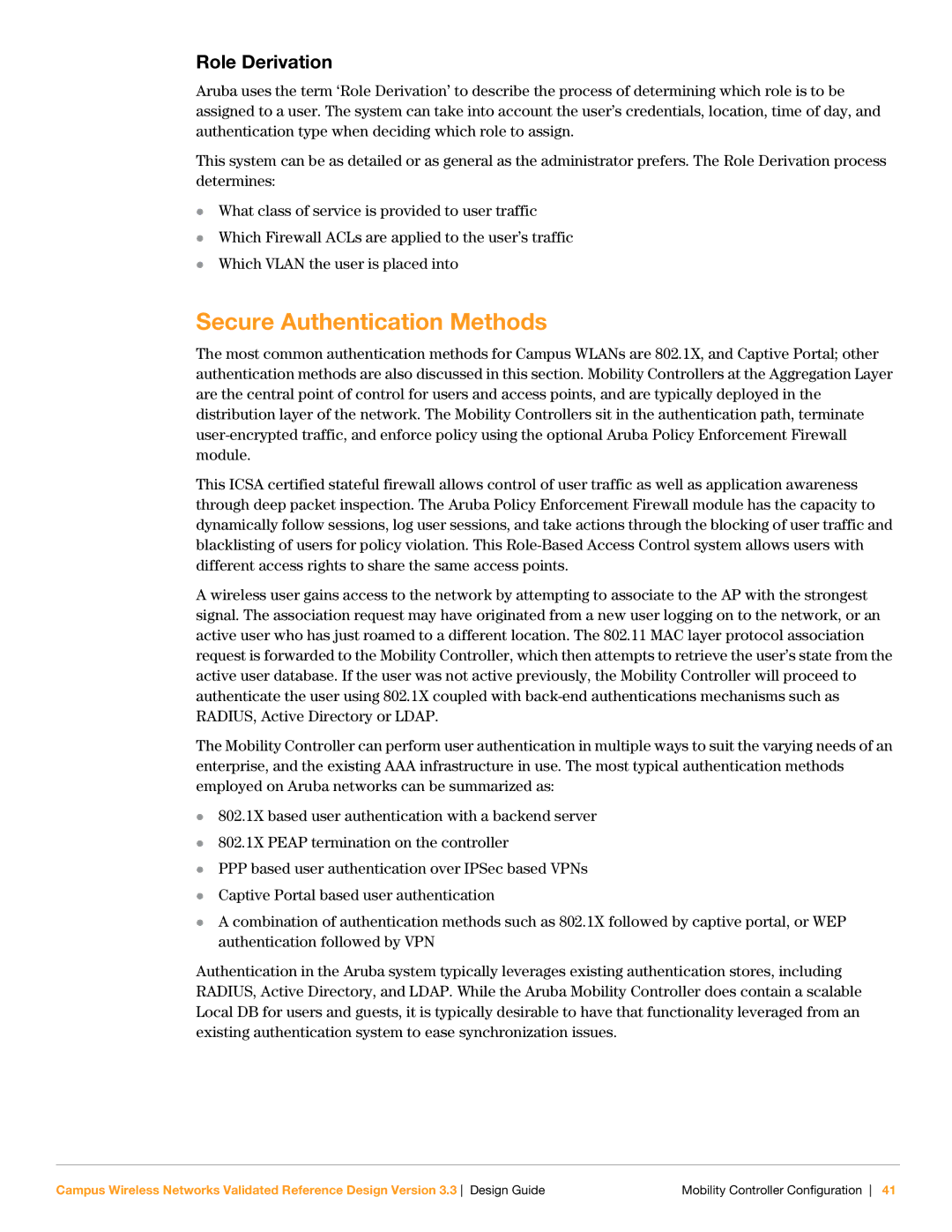Role Derivation
Aruba uses the term ‘Role Derivation’ to describe the process of determining which role is to be assigned to a user. The system can take into account the user’s credentials, location, time of day, and authentication type when deciding which role to assign.
This system can be as detailed or as general as the administrator prefers. The Role Derivation process determines:
zWhat class of service is provided to user traffic
zWhich Firewall ACLs are applied to the user’s traffic
zWhich VLAN the user is placed into
Secure Authentication Methods
The most common authentication methods for Campus WLANs are 802.1X, and Captive Portal; other authentication methods are also discussed in this section. Mobility Controllers at the Aggregation Layer are the central point of control for users and access points, and are typically deployed in the distribution layer of the network. The Mobility Controllers sit in the authentication path, terminate
This ICSA certified stateful firewall allows control of user traffic as well as application awareness through deep packet inspection. The Aruba Policy Enforcement Firewall module has the capacity to dynamically follow sessions, log user sessions, and take actions through the blocking of user traffic and blacklisting of users for policy violation. This
A wireless user gains access to the network by attempting to associate to the AP with the strongest signal. The association request may have originated from a new user logging on to the network, or an active user who has just roamed to a different location. The 802.11 MAC layer protocol association request is forwarded to the Mobility Controller, which then attempts to retrieve the user’s state from the active user database. If the user was not active previously, the Mobility Controller will proceed to authenticate the user using 802.1X coupled with
The Mobility Controller can perform user authentication in multiple ways to suit the varying needs of an enterprise, and the existing AAA infrastructure in use. The most typical authentication methods employed on Aruba networks can be summarized as:
z802.1X based user authentication with a backend server
z802.1X PEAP termination on the controller
zPPP based user authentication over IPSec based VPNs
zCaptive Portal based user authentication
zA combination of authentication methods such as 802.1X followed by captive portal, or WEP authentication followed by VPN
Authentication in the Aruba system typically leverages existing authentication stores, including RADIUS, Active Directory, and LDAP. While the Aruba Mobility Controller does contain a scalable Local DB for users and guests, it is typically desirable to have that functionality leveraged from an existing authentication system to ease synchronization issues.
Campus Wireless Networks Validated Reference Design Version 3.3 Design Guide | Mobility Controller Configuration 41 |
